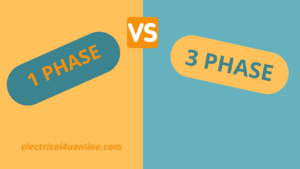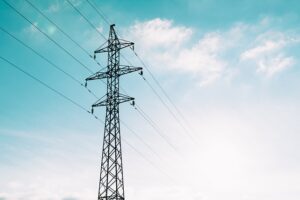Electric AC (alternating current) is a type of electrical current in which the direction of the flow of electric charge periodically reverses. This means that the electric charge, or the flow of electrons, alternates its direction regularly. AC is in contrast to DC (direct current), where the flow of electric charge is constant in one direction.
AC current is commonly used in household electrical systems and many other applications. The voltage in AC circuits typically varies sinusoidally, which means it follows a smooth, repetitive wave pattern.
This periodic reversal of current and voltage has several advantages, such as the ability to easily transform the voltage level using transformers and the ability to transmit electricity over long distances with less loss.
AC power can be converted to different voltages, making it suitable for various devices and applications. The standard frequency for AC power in many countries is 50 or 60 hertz (Hz), which means the direction of current reverses 50 or 60 times per second.
AC electricity is the type of electricity that comes out of standard electrical outlets in most homes and businesses, and it’s what powers most of the appliances and devices we use daily.
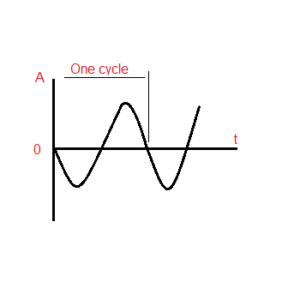
Table of Contents
Why is an alternating current called AC?
The term “AC” stands for “Alternating Current.” It’s called alternating current because the direction of electric current alternates or changes direction periodically.
In an AC electrical circuit, the flow of electric charge (which is the movement of electrons) reverses direction at regular intervals.
This is in contrast to “DC,” which stands for “Direct Current.” In a DC circuit, the electric charge flows in only one direction, without reversing. DC power sources, like batteries, provide a constant, unidirectional flow of current.
The distinction between AC and DC is significant because each has its own set of applications and advantages.
AC is commonly used for electricity distribution in homes and businesses because it’s easy to transform the voltage levels using transformers and can be transmitted over long distances with minimal energy loss.
On the other hand, DC is often used for electronic devices and some specific applications, such as batteries for portable devices.
The naming convention of AC and DC helps to differentiate between these two fundamental types of electrical current.
Advantages of Alternating current
Alternating current (AC) has several advantages and disadvantages:
Advantages of AC (Alternating Current):
1. Ease of Voltage Transformation: AC voltage can be easily transformed from high to low levels (or vice versa) using transformers. This is crucial for long-distance power transmission and adapting voltage for various applications.
2. Efficient Power Transmission: AC is more efficient for transmitting electricity over long distances compared to direct current (DC). This efficiency is due to the ability to change the voltage with minimal energy loss.
3. Generation Simplicity: AC generators are generally simpler and more cost-effective to build and maintain compared to DC generators. They can be easily connected to power generation sources like turbines.
4. Safety: AC voltage can be reduced or completely cut off by disconnecting the circuit, which enhances safety in electrical systems and appliances.
5. Compatibility: Most household and industrial appliances are designed to operate on AC power, making it the standard for electrical systems.
6.Polarity Reversal: AC alternates in polarity, which is useful for certain applications like electric motors and transformers.
Disadvantages of AC (Alternating Current):
1. Conversion for Some Devices: Some electronic devices and components, like semiconductors and certain LEDs, work better on DC power. Converting AC to DC requires additional components like rectifiers.
2. Complex Circuitry: AC circuits often require more complex components like transformers and capacitors to manage voltage and phase changes. This can make circuit design more intricate.
3. Energy Loss in Transmission Lines: While AC is efficient for long-distance power transmission, some energy is still lost as heat due to the resistance in transmission lines.
4. Higher Risk of Electric Shock: AC is generally considered to be more dangerous in terms of electric shock due to the alternating voltage and the increased risk of involuntary muscle contractions when in contact with live wires.
5. Harmonics and Electromagnetic Interference: AC power systems can generate harmonics and electromagnetic interference, which can affect the performance of sensitive electronic equipment.
6. Complex Waveform: The sinusoidal waveform of AC can make it more complex to work with for certain electronic and control systems compared to the simplicity of a steady DC voltage.
AC has several advantages, such as ease of voltage transformation and efficient long-distance power transmission.
However, it also has its drawbacks, particularly when it comes to certain types of electronic devices, electrical safety, and energy loss in transmission. The choice between AC and DC depends on the specific application and requirements.
For more information read my article about AC generators.
Alternating current formula
As mentioned above AC power generation is divided in two. 1 and 3 phases system.
The current formula for single phase loads:
I = P / (V * I * cos Φ)
The current formula for 3 phases loads:
I = P / (√3 * V * I * cos Φ)
How to measure AC current using a multimeter?
A multimeter is an instrument that is used for electric voltage, resistance, current, and some more measurements.
To use it for alternating current calculation simply select alternating current and connect the device in series with the load.
A better way to measure current is to use a current clamp meter which needs no series connection. just put the device core around the cable and take the reading.
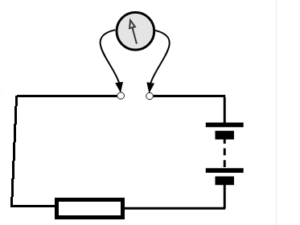
What is Direct Current?
Direct Current (DC) is a type of electric current in which the flow of electric charge (typically electrons) occurs in one direction, and the magnitude and direction of the current remain relatively constant over time.
In a DC circuit, the voltage and current have a steady and unidirectional flow. The voltage in a DC circuit does not change polarity, which means it maintains a constant positive or negative value.
Key characteristics of DC include:
-
Unidirectional Flow: In a DC circuit, electrons flow in one consistent direction from the negative terminal to the positive terminal of a power source, such as a battery or a rectified power supply.
-
Constant Magnitude: The magnitude of the current and voltage in a DC circuit remains relatively constant. This stability is suitable for devices that require a steady and uninterrupted power supply.
-
Simple Circuits: DC circuits are generally simpler in design compared to AC circuits, as there is no need to account for changing voltage polarity and phase.
DC is commonly used in various applications, including:
-
Batteries: Most batteries provide DC power, which is used to power portable devices like smartphones, laptops, and flashlights.
-
Electrochemical Processes: Many chemical and electroplating processes require a constant and consistent flow of DC to function properly.
-
Electronic Devices: Many electronic devices, such as computers and televisions, use DC power internally. AC power is converted to DC through power supplies or adapters.
-
Automotive Systems: The electrical systems in vehicles, including lighting and the starter motor, typically operate on DC power supplied by the car’s battery.
-
Photovoltaic (Solar) Systems: Solar panels generate DC electricity, which is often converted to AC for use in homes and the power grid.
DC has its advantages in terms of simplicity and compatibility with many electronic devices. However, it is less efficient for long-distance power transmission and not as suitable for some types of power distribution and electrical systems as Alternating Current (AC).
In many cases, AC power is used for electricity distribution, while DC power is converted from or to AC for various applications.
DC current application and uses
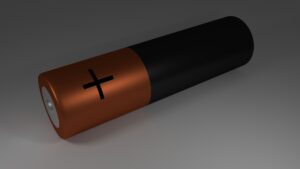
Direct current (DC) has a number of important applications in various fields.
While its usage has somewhat diminished in certain areas in favor of alternating current (AC), it still remains relevant and crucial in a number of applications due to its unique characteristics. Some important applications and uses of DC current include:
-
Electronics: DC is fundamental to the operation of electronic devices. Many electronic components and circuits, such as transistors and integrated circuits, require DC to function properly. Batteries, which are a common source of DC power, are used to power a wide array of portable electronic devices such as smartphones, laptops, and handheld gaming devices.
-
Telecommunications: Various components of telecommunication systems, such as mobile phones, rely on DC power sources. Even though signals are often transmitted using AC, the internal components of the devices are typically powered by DC.
-
Automotive Industry: The automotive industry heavily relies on DC power for various applications. Batteries provide the necessary DC power to start the engine, power the lights, and operate other electrical components in vehicles. Additionally, electric and hybrid vehicles operate using high-voltage DC power from their battery packs.
-
Photovoltaic Systems: Solar cells produce DC electricity, which is then stored in batteries or converted to AC through inverters for use in homes and businesses. Photovoltaic systems are an important source of renewable energy and contribute significantly to reducing dependence on traditional energy sources.
-
Railway and Transportation: Many railway systems and certain forms of public transportation use DC power. For instance, subway systems, trolleybuses, and electric locomotives often use DC electric power for their operations.
-
Industrial Applications: Some industrial processes, particularly those that require a consistent and stable power supply, utilize DC. For example, electroplating, metal refining, and certain types of welding rely on direct current.
-
Data Centers: DC power distribution is gaining traction in data centers as it can be more energy-efficient for certain operations. Data centers utilize DC power for its stability and efficiency in managing large amounts of computer hardware and servers.
-
Battery Charging: Charging batteries, such as those in smartphones, laptops, and electric vehicles, typically involves DC current. This is an essential application, especially with the increasing use of portable electronic devices and the growing demand for electric vehicles.
While AC power is more commonly used for long-distance power transmission due to its ability to be easily converted to different voltage levels, DC power remains essential for many specific applications where its unique characteristics are advantageous.
DC Current Formula
The formula for calculating the current (I) in a direct current (DC) circuit can be determined using Ohm’s law.
Ohm’s law states that the current flowing through a conductor between two points is directly proportional to the voltage across the two points and inversely proportional to the resistance between them. The formula is:
I = P / V
where:
- is the current in amperes (A).
- is the voltage in volts (V).
- is the resistance in ohms (Ω).
Here’s an example:
Let’s say we have a DC circuit with a voltage of 12 volts (V) and a resistance of 4 ohms (). Using Ohm’s law, we can find the current flowing through the circuit:
I = 12/ 4 =
How long will a DC motor run on a battery?
The running time of a DC motor powered by a battery depends on several factors, including the capacity of the battery, the current drawn by the motor, the efficiency of the motor, and the load on the motor. To determine the running time of a DC motor on a battery, you can use the formula:
where:
- is the time in hours (h) the motor will run.
- is the battery capacity in ampere-hours (Ah) or milliampere-hours (mAh).
- is the current drawn by the motor in amperes (A).
For example, if you have a 12 Ah battery and the DC motor draws a current of 3 A, the running time can be calculated as:
T= 12/3 = 4 hours
This means the DC motor would run for 4 hours before the battery is completely drained. It’s important to note that this is a simplified calculation and the actual running time can be influenced by various factors such as variations in the motor’s load, temperature, and the battery’s condition.
Why is residential power not DC?
Residential power is not primarily DC but is predominantly AC, meaning it is supplied in the form of alternating current. Several factors contribute to the prevalence of AC power in residential applications:
- Easier voltage transformation: AC voltage can be easily transformed using transformers, enabling efficient long-distance transmission. This facilitates the transmission of power from power plants to residential areas without significant loss of energy. DC, on the other hand, requires more complex and costly equipment for voltage transformation.
- Efficient power transmission: AC power is well-suited for long-distance power transmission due to its ability to be easily stepped up or down using transformers. This efficiency is crucial for transmitting electricity over long distances from power plants to residential areas.
- Electricity generation: Many power generation methods, such as hydroelectric, nuclear, and thermal power plants, naturally produce AC power. While DC power generation is possible through some sources like solar panels and batteries, the majority of power plants worldwide generate AC power.
- Historical infrastructure: The existing electrical infrastructure is designed to handle AC power. To switch to DC power distribution, a significant overhaul of the infrastructure would be necessary, which would be a costly and complex process.
- Compatibility with appliances: Many household appliances and devices are designed to operate using AC power. Although some devices, such as smartphones and laptops, use DC power, they often incorporate AC-DC converters to utilize the AC power supply.
While DC power has certain advantages, such as being more efficient for certain applications and better suited for some modern technologies, the existing infrastructure, historical precedent, and the efficiency of AC power transmission have contributed to the prevalence of AC power in residential settings.
However, with the advancement of technologies like renewable energy sources and the increasing use of DC-powered devices, there is growing interest in exploring the integration of DC power distribution systems within specific areas of residential and commercial settings to improve energy efficiency.
For more information about AC & DC power read my detailed article, here.
Which current is stored in batteries AC or DC?
Batteries store direct current (DC) rather than alternating current (AC). When electrical energy is stored in a battery, it is stored in the form of chemical energy, which can then be converted back into electrical energy when the battery is used. This electrical energy is in the form of direct current, which flows in only one direction.
When a battery is charged, the process involves the conversion of electrical energy, often from an external source, into chemical energy within the battery. This chemical energy is then converted back into electrical energy when the battery is connected to a circuit and current flows from the battery to power a device or a system.
In contrast, alternating current (AC) is the form of electric current that regularly reverses direction, changing its magnitude and direction cyclically.
AC is the type of current typically used in the transmission of electricity through power lines and is commonly used in many household and industrial applications.
However, batteries themselves do not store AC; they store energy in the form of DC, which can be converted from or to AC using inverters or converters when necessary.
Can I run my device on DC instead of AC?
Not all devices can be powered by DC. While some devices can work with an inverter converting DC to AC, running AC devices directly on DC power isn’t straightforward.
AC devices often use transformers, which don’t function on DC. The periodic change in polarity in AC produces a magnetic effect crucial for these devices, lacking in DC.
Attempting to power them with DC might damage the device due to heat and ineffective circuit completion.
Devices utilizing RC circuits or voltage doublers won’t function on DC either. Washing machines, dishwashers, fans, and AC motors need AC power.
Some modern air conditioners can work with an inverter, or specific UPS-powered units designed for DC use, given suitable power compatibility.
Do computers run on AC or DC power supply?
Computers primarily run on direct current (DC) power, but the power supplied to the computer from an electrical outlet is alternating current (AC).
The power supply unit (PSU) in a computer is responsible for converting the incoming AC power from the wall outlet into the various DC voltages required by the computer’s internal components.
The AC power from the outlet is converted to DC power with the help of a rectifier and other circuits within the power supply unit. This converted DC power is then distributed to various components within the computer, including the motherboard, CPU, memory, and other peripherals.
The power supply unit ensures that the computer receives stable and regulated DC power, as the internal components of the computer require different DC voltage levels to function properly. Without the power supply unit’s conversion of AC to DC, the computer would not be able to operate.
Overall, while the power source for a computer is AC, the internal components and circuits rely on DC power to function, which is made possible by the power supply unit’s conversion process.
Read my comprehensive article on my SparkyFrenzy site: Can High Voltage Damage Your PC?
Why do computers use DC power instead of AC?
Computers, like most modern electronic devices, operate using direct current (DC) power. The main reason for this is that the internal components of computers, such as the CPU, memory chips, and other integrated circuits, require stable and regulated DC voltage to function properly.
DC power provides a constant flow of electricity in one direction, ensuring a steady and reliable power supply for these components.
However, the electrical power supplied to homes and buildings is typically alternating current (AC). AC power is commonly used for power transmission and distribution due to its ability to be easily converted to different voltage levels using transformers. This makes it more efficient for long-distance power transmission from power plants to residential and commercial areas.
To bridge the gap between the AC power supplied to homes and the DC power needed by electronic devices like computers, a power supply unit (PSU) is employed. The PSU is responsible for converting the incoming AC power into the various DC voltages required by the computer’s internal components.
The conversion process involves rectification and regulation, ensuring that the computer receives stable and suitable DC power.
In summary, while AC power is used for transmission and distribution, computers and other electronic devices utilize DC power for their internal operations, necessitating the use of a power supply unit to convert the AC power to the required DC form.
What type of current charges laptop?
Laptops are charged using direct current (DC). The power adapter, also known as the charger, is responsible for converting the alternating current (AC) from the electrical outlet into direct current, which is then used to charge the laptop’s battery and power the device.
The power adapter typically converts the AC power from the outlet into the specific DC voltage and current required by the laptop.
This process ensures that the laptop receives the appropriate and stable DC power necessary for charging its battery and operating its internal components.
is a car battery ac or dc voltage?
A car battery provides Direct Current (DC) voltage. The electrical power generated and stored in a typical automotive battery is in the form of DC. This DC voltage is used to start the car’s engine, power the lights and accessories, and charge the battery itself.
In contrast, the vehicle’s alternator generates Alternating Current (AC) voltage initially, but this AC is quickly rectified (converted) to DC voltage before it is used to charge the battery and power the vehicle’s electrical systems. The alternator generates AC because it is more efficient for generating electricity in a rotating machine, but the DC voltage is essential for the car’s electrical needs.So, the car battery itself supplies DC voltage, while the alternator in the car’s electrical system converts mechanical energy into AC, which is then rectified into DC for practical us
Can a DC current flow through the capacitor?
Yes, a DC (direct current) can initially charge a capacitor, causing current to flow into the capacitor until it becomes fully charged. However, once the capacitor is fully charged, ideally, no current will flow through it in a steady state because the capacitor blocks the flow of DC once it reaches its capacity.
In simple terms, a capacitor resists changes in voltage across its plates, so when a DC voltage is applied, current flows into the capacitor until the voltage across the capacitor equals the applied voltage.
After this point, the capacitor behaves like an open circuit, blocking the flow of direct current. However, if the voltage across the capacitor changes, it allows the flow of current until the voltage stabilizes once again.
Why dc current is not used in the transformer?
DC (direct current) is not typically used in transformers due to the principles on which transformers operate.
Transformers are primarily designed to work with alternating current (AC). The fundamental principle behind a transformer’s operation involves electromagnetic induction, where a changing magnetic field induces a voltage in a nearby conductor.
This principle only works effectively with AC because it allows for the continuous change in the magnetic field, which is necessary for the induction process.
When direct current is applied to a transformer, the absence of alternating current prevents the magnetic field from fluctuating, resulting in a constant magnetic field.
Consequently, no change occurs in the magnetic flux, leading to the absence of induction and rendering the transformer ineffective in transferring power.
Transformers are widely used in power transmission and distribution systems to step up or step down voltages, and their efficient operation relies on the alternating current.
However, DC-DC converters are specifically designed to handle direct current and can perform similar functions as transformers for direct current systems.
Can you get an electric shock from a battery?
Yes, it is possible to receive an electric shock from a battery, particularly from higher voltage batteries.
While household batteries (like AA, AAA, or 9V batteries) generally have lower voltages and are not likely to cause significant harm, larger batteries such as car batteries, industrial batteries, or high-capacity rechargeable batteries can deliver a potentially dangerous electric shock.
The severity of an electric shock depends not only on the voltage but also on factors such as the current, the duration of the shock, and the path the current takes through the body.
Even a relatively low voltage can be dangerous if it produces a high current when it passes through the body, potentially leading to burns, muscle contractions, and even cardiac arrest in extreme cases.
It is important to handle batteries with care and to take precautions to prevent electric shock, especially when dealing with higher voltage batteries.
Always use proper insulation, such as gloves, when handling batteries that could deliver a significant electric shock.
Does the DC power source have a power factor?
The concept of power factor is typically associated with AC (alternating current) power systems. In an AC system, power factor represents the ratio of real power (measured in watts) to apparent power (measured in volt-amperes).
It is a measure of how effectively electrical power is being converted into useful work output. Power factor is influenced by the phase relationship between the voltage and the current in an AC circuit.
On the other hand, in a DC (direct current) power source, there is no concept of phase difference between voltage and current, as the current flows continuously in one direction. Therefore, the notion of power factor is not directly applicable to DC circuits.
However, in practical applications where DC power sources are used in conjunction with electronic components or systems, it is still crucial to consider the efficiency of the system in converting the DC power to useful work, even though the term “power factor” may not be used in the same context as in AC systems.
Factors such as losses due to resistance, heat dissipation, and overall system efficiency are still significant considerations in the utilization of DC power sources.
For more information about Power Factor, read my article here.
Install my Free Android App on Google Play:
Electrical Cables Most Common Tables “Electrical Cables Tables”
And, my Electrical Calculations App “Fast Electrical Calculator”
Discover more great content by subscribing to My channel
Looking to stay ahead of the game in the world of electrical engineering? Subscribe to my YouTube channel and gain access to exclusive content you won’t find anywhere else!
The staff I recommend
(Amazon Affiliate Links to products I believe are high quality):
- Economy 120 Volt/60Hz AC Power Source – Step-Down Voltage & Frequency Converters 1800W
- UNI-T Digital Multimeter Tester UT139C
- 50-Amp Extension Cord for RV “100ft”
- Voltage Stabilizer 110/220v
- Hair Dryer “best selling“
- TOSHIBA EM131A5C-BS Countertop Microwave Ovens
Disclaimer: This contains affiliate links to Amazon products. I may earn a commission for purchases made through these links.


